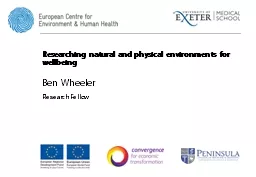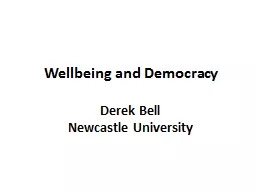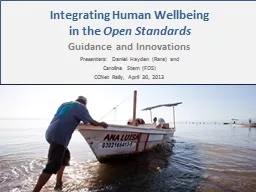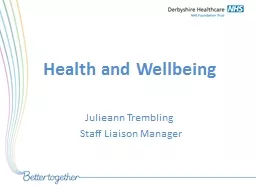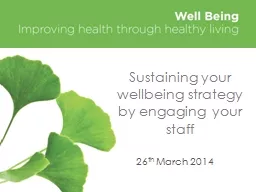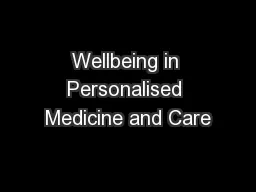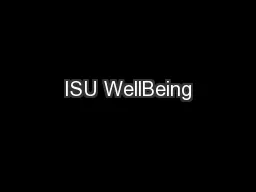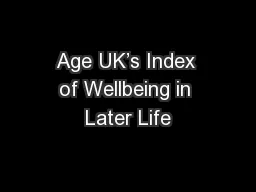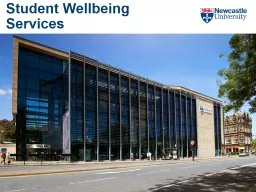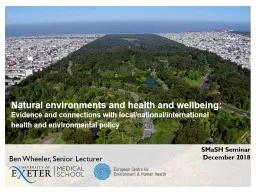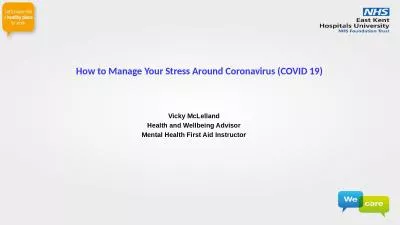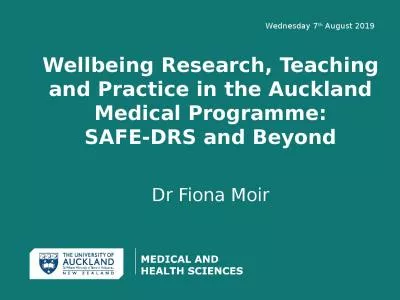PPT-Researching natural and physical environments for wellbeing
Author : tawny-fly | Published Date : 2017-07-01
Ben Wheeler Research Fellow Research Areas ECEHH research considers both the positive consequences and threats posed by interacting with our environment both
Presentation Embed Code
Download Presentation
Download Presentation The PPT/PDF document "Researching natural and physical environ..." is the property of its rightful owner. Permission is granted to download and print the materials on this website for personal, non-commercial use only, and to display it on your personal computer provided you do not modify the materials and that you retain all copyright notices contained in the materials. By downloading content from our website, you accept the terms of this agreement.
Researching natural and physical environments for wellbeing: Transcript
Download Rules Of Document
"Researching natural and physical environments for wellbeing"The content belongs to its owner. You may download and print it for personal use, without modification, and keep all copyright notices. By downloading, you agree to these terms.
Related Documents

